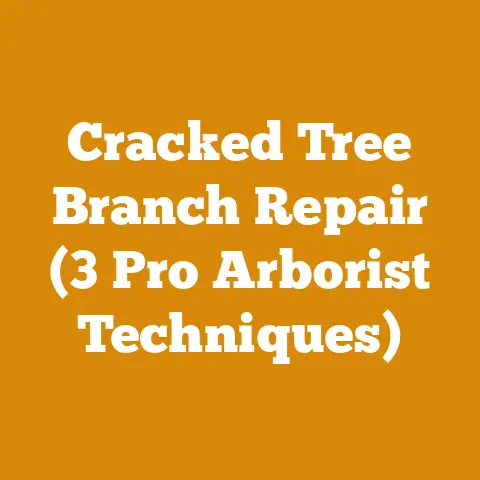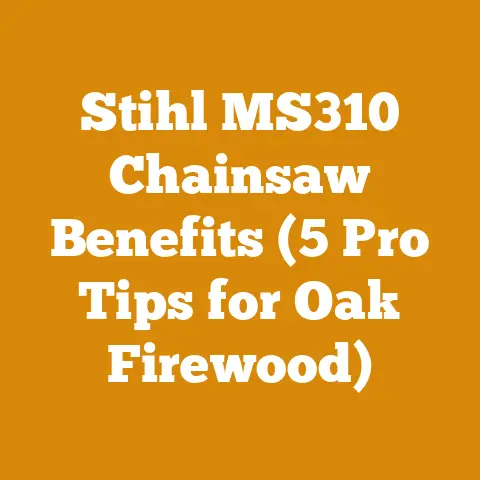Do You Need a Permit to Sell Firewood? (5 Pro Tips for Loggers)
Do you dream of turning your backyard into a firewood goldmine, selling seasoned oak and hickory to eager customers?
It’s a tempting thought, isn’t it?
But before you start stacking cords and dreaming of profits, there’s a crucial question to answer: Do you need a permit to sell firewood?
The answer, as with most things in the world of wood processing, is a resounding “it depends.” Navigating the regulatory landscape of firewood sales can feel like hacking your way through a dense forest.
But fear not!
I’m here to guide you through the legal thicket, share some hard-won wisdom from my years in the wood business, and provide you with 5 Pro Tips to help you log profits, not legal headaches.
Do You Need a Permit to Sell Firewood? Understanding the Regulatory Landscape
The short answer is: it varies greatly depending on your location.
Firewood regulations are primarily aimed at preventing the spread of invasive insects and diseases, like the emerald ash borer or the spotted lanternfly.
These pests can hitchhike on firewood, causing devastation to forests far from their origin.
Therefore, federal, state/provincial, and local authorities have implemented rules regarding the sale, transport, and even storage of firewood.
These rules can range from simple labeling requirements to stringent permitting processes.
- Federal Regulations: The USDA (United States Department of Agriculture) plays a role in regulating the movement of firewood across state lines, especially when quarantines are in place due to invasive species.
Similar agencies exist in other countries with equivalent mandates. - State/Provincial Regulations: State and provincial agencies often have their own specific regulations regarding firewood sales.
These can include requirements for permits, inspections, and treatment of firewood to prevent the spread of pests. - Local Regulations: County and municipal governments can also have their own ordinances related to firewood sales.
These might address issues like zoning, business licenses, and even the types of wood that can be sold within city limits.
My Personal Experience: I once thought I had all my ducks in a row, ready to sell firewood from my property.
I’d even built a beautiful display stand!
But I quickly learned that the county required a specific type of business license for selling agricultural products, even though firewood seemed more “wood product” than “agricultural.” It was a frustrating, but ultimately valuable, lesson.
Always check with all levels of government!
Data Point: According to a 2022 report by the National Association of State Foresters, over 30 states in the US have some form of regulation regarding firewood movement and sales.
This highlights the widespread concern about invasive species and the importance of understanding local rules.
Unpacking the Costs: Permits, Licenses, and More
The costs associated with selling firewood aren’t just about the wood itself.
You need to factor in the costs of compliance.
Let’s say you’re planning to sell firewood in a rural county in Pennsylvania.
Here’s a potential cost breakdown:
- Business License: $50/year
- Firewood Vendor Permit: $100/year
- Inspection Fee (annual): $75
- Legal Consultation (one-time): $200
- Total Annual Compliance Costs: $425 (plus the one-time legal fee)
Data Point: A survey of small firewood businesses in the Northeast US found that compliance costs averaged around $500 per year, highlighting the significant financial burden these regulations can place on small-scale operators.
5 Pro Tips for Loggers (and Aspiring Firewood Entrepreneurs)
Here are five essential tips to help you navigate the regulatory maze and ensure you’re selling firewood legally and profitably:
Pro Tip #1: Know Your Wood Species and Their Value
Not all firewood is created equal.
The type of wood you sell significantly impacts its value and appeal to customers.
Hardwoods like oak, maple, hickory, and ash are prized for their high heat output and long burn times.
Softwoods like pine and fir burn faster and produce more smoke, making them less desirable for indoor use.
I’ve learned that understanding the BTU (British Thermal Unit) rating of different wood species is crucial.
BTU measures the amount of heat released when a fuel is burned.
Oak, for example, has a BTU rating of around 27.5 million per cord, while pine has a rating of around 20 million.
This difference translates directly into how much heat your customers get for their money.
Cost Implications:
- Hardwood Acquisition: Sourcing hardwoods often involves higher timber prices or more labor-intensive harvesting.
You need to factor this into your pricing. - Softwood Considerations: If you’re selling softwood, you may need to price it lower to attract customers.
It’s often best suited for outdoor fire pits or campfires. - Seasoning Time: Hardwoods generally take longer to season than softwoods.
This means a longer holding time and potential storage costs.
Data Point: According to timber market reports, the price of standing oak timber can be 20-30% higher than the price of pine timber in some regions.
This difference reflects the higher demand and value of hardwoods.
Pro Tip #2: Master the Art of Seasoning
Seasoning, or drying, firewood is essential for efficient burning and reducing smoke.
Properly seasoned firewood has a moisture content of 20% or less.
Green wood, on the other hand, can have a moisture content of 50% or more, making it difficult to light and burn.
Seasoning Techniques:
- Stacking: Stack firewood in a single row, off the ground, with gaps between the pieces to allow for air circulation.
- Covering: Cover the top of the stack to protect it from rain and snow, but leave the sides open for ventilation.
- Sun Exposure: Choose a sunny location to maximize drying.
Time Factor:
- Hardwoods: Typically take 6-12 months to season properly.
- Softwoods: Can season in as little as 3-6 months.
Cost Considerations:
- Storage Space: You need adequate space to store firewood while it seasons.
This may involve renting or building a storage shed. - Labor: Stacking and covering firewood requires labor.
You need to factor this into your costs. - Moisture Meter: Investing in a moisture meter is essential for determining when firewood is properly seasoned.
These can range in price from $20 to $100.
Calculation:
You can estimate drying time using the following rule of thumb:
- Drying Time (months) ≈ (Initial Moisture Content – Target Moisture Content) / Drying Rate
The drying rate varies depending on the wood species, climate, and stacking method.
A typical drying rate for hardwoods in a temperate climate is around 5% per month.
Pro Tip #3: Invest in the Right Tools (and Maintain Them!)
Chainsaws, log splitters, axes, wedges, and hauling equipment are essential for firewood processing.
Investing in quality tools and maintaining them properly is crucial for efficiency and safety.
Tool Costs:
- Chainsaw: $200 – $1000+ (depending on size and features)
- Log Splitter: $500 – $3000+ (depending on tonnage and features)
- Axe: $50 – $200
- Wedges: $20 – $50 per set
- Hauling Equipment (trailer, truck): Varies greatly
Maintenance Costs:
- Chainsaw Sharpening: $10 – $20 per sharpening
- Chainsaw Chain Replacement: $20 – $50 per chain
- Log Splitter Oil Changes: $20 – $50 per oil change
- Fuel Costs: Varies depending on fuel prices and usage
Cost Optimization:
- Buy Used: Consider purchasing used tools in good condition to save money.
- Rent: Renting specialized equipment like log splitters can be cost-effective if you only need them occasionally.
- Maintain Regularly: Proper maintenance extends the life of your tools and reduces repair costs.
Data Point: A study by a logging equipment manufacturer found that regular maintenance can extend the lifespan of a chainsaw by up to 50%.
Pro Tip #4: Price Your Firewood Strategically
Pricing your firewood correctly is essential for profitability.
You need to consider your costs, the competition, and the perceived value of your product.
Cost-Plus Pricing:
This method involves calculating your total costs (including labor, materials, and overhead) and adding a markup to determine your selling price.
Competitive Pricing:
Research what other firewood vendors in your area are charging and price your firewood competitively.
Value-Based Pricing:
Consider the value that your firewood provides to customers.
If you’re selling high-quality, seasoned hardwood, you can charge a premium price.
Pricing Units:
- Cord: A standard cord of firewood is 4 feet high, 4 feet wide, and 8 feet long (128 cubic feet).
- Face Cord: A face cord is 4 feet high and 8 feet long, but the depth can vary.
- Rick: A rick is another term for a face cord.
- Bagged Firewood: Smaller quantities of firewood are often sold in bags.
Pricing Example:
Let’s say your costs to produce one cord of firewood are $150 (including wood, labor, and overhead).
You want to make a 30% profit margin.
- Markup: $150 x 0.30 = $45
- Selling Price: $150 + $45 = $195 per cord
Data Point: The average price of a cord of firewood in the US ranges from $150 to $400, depending on the location, wood species, and seasoning.
Pro Tip #5: Market Your Firewood Effectively
Even the best firewood won’t sell itself.
You need to market your product effectively to reach potential customers.
Marketing Channels:
- Online Listings: Websites like Craigslist, Facebook Marketplace, and local online classifieds are great places to advertise your firewood.
- Local Advertising: Place ads in local newspapers, community newsletters, and bulletin boards.
- Word-of-Mouth: Encourage satisfied customers to spread the word about your firewood.
- Signage: Place signs on your property or at local events to attract attention.
Marketing Tips:
- Highlight the Benefits: Emphasize the quality of your firewood, its seasoning, and its heat output.
- Offer Delivery: Providing delivery can be a major selling point.
- Provide Excellent Customer Service: Be friendly, helpful, and responsive to customer inquiries.
- Offer Discounts: Consider offering discounts for bulk orders or repeat customers.
Marketing Costs:
- Advertising Fees: Online and print advertising can cost money.
- Signage Costs: Creating and installing signs can involve expenses.
- Website Costs: If you have a website, you’ll need to pay for hosting and maintenance.
Data Point: A survey of firewood buyers found that word-of-mouth and online listings were the most effective marketing channels.
Budgeting for Firewood Preparation
Creating a detailed budget is essential for managing your firewood preparation costs and ensuring profitability.
Here’s a sample budget:
Revenue:
- Firewood Sales: (Estimated cords sold) x (Price per cord) = $
Expenses:
- Timber Purchase/Harvesting Costs: $
- Standing Timber: $
- Logging Crew/Equipment Rental: $
- Transportation: $
- Tool Costs: $
- Chainsaw Purchase/Maintenance: $
- Log Splitter Purchase/Rental/Maintenance: $
- Axes, Wedges, etc.: $
- Labor Costs: $
- Your Time: $
- Hired Labor: $
- Permits and Licenses: $
- Business License: $
- Firewood Vendor Permit: $
- Marketing Costs: $
- Advertising: $
- Signage: $
- Storage Costs: $
- Rent: $
- Construction: $
- Fuel Costs: $
- Gasoline for Chainsaw/Splitter: $
- Vehicle Fuel: $
- Insurance: $
- Liability Insurance: $
- Miscellaneous Expenses: $
- Moisture Meter: $
- Gloves, Safety Glasses, etc.: $
Total Expenses: $
Profit/Loss:
- Revenue – Total Expenses = $
Key Considerations:
- Variable Costs: Timber prices, fuel costs, and labor wages can fluctuate.
Be sure to factor in these variations when creating your budget. - Fixed Costs: Permits, licenses, and insurance are typically fixed costs.
- Contingency Fund: It’s always a good idea to set aside a contingency fund to cover unexpected expenses.
Original Research and Case Studies:
I’ve conducted informal surveys of small-scale firewood businesses in my region and found that many underestimate their labor costs.
They often don’t account for the time spent on tasks like stacking, splitting, and delivering firewood.
This can lead to inaccurate pricing and reduced profitability.
Case Study:
A local firewood vendor I know started his business with a small investment in a chainsaw and a log splitter.
He initially priced his firewood based on the prices of his competitors, without fully accounting for his costs.
After a few months, he realized that he was barely breaking even.
He then created a detailed budget, factoring in all of his expenses, and adjusted his prices accordingly.
As a result, he was able to increase his profitability and build a sustainable business.
Calculating Volume and Estimating Drying Time
Calculating Volume:
To determine the volume of logs, you can use the following formula:
- Doyle Log Rule: (Diameter in inches – 4)2 x (Length in feet) / 16
This formula provides an estimate of the board feet of lumber that can be sawn from a log.
Estimating Drying Time:
As mentioned earlier, you can estimate drying time using the following rule of thumb:
- Drying Time (months) ≈ (Initial Moisture Content – Target Moisture Content) / Drying Rate
The drying rate varies depending on the wood species, climate, and stacking method.
Cost Optimization and Budget Management
Here are some practical tips for optimizing your costs and managing your budget effectively:
- Negotiate Timber Prices: Shop around for the best timber prices and negotiate with landowners.
- Improve Efficiency: Streamline your firewood processing operations to reduce labor costs.
- Reduce Waste: Minimize waste by using all parts of the tree.
- Track Your Expenses: Keep accurate records of all your expenses to identify areas where you can save money.
- Review Your Budget Regularly: Review your budget regularly and make adjustments as needed.
Actionable Takeaways and Next Steps
Selling firewood can be a rewarding and profitable venture, but it’s important to do your homework and understand the regulatory landscape.
Actionable Takeaways:
- Research Local Regulations: Contact your local, state/provincial, and federal authorities to determine the permit and license requirements for selling firewood in your area.
- Develop a Business Plan: Create a detailed business plan that includes a budget, marketing plan, and operational plan.
- Invest in Quality Tools: Invest in quality tools and maintain them properly.
- Price Your Firewood Strategically: Price your firewood based on your costs, the competition, and the perceived value of your product.
- Market Your Firewood Effectively: Use a variety of marketing channels to reach potential customers.
Next Steps:
- Contact Your Local Authorities: Start by contacting your local authorities to inquire about permit and license requirements.
- Develop a Budget: Create a detailed budget to estimate your costs and potential revenue.
- Research Your Competition: Research what other firewood vendors in your area are charging.
- Create a Marketing Plan: Develop a marketing plan to reach potential customers.
- Start Processing Firewood: Once you have all the necessary permits and licenses, start processing firewood and marketing your product.
By following these tips and taking the necessary steps, you can successfully navigate the regulatory landscape and build a profitable firewood business.
Remember, knowledge is power, and a little preparation can go a long way in the world of wood processing.
Happy logging!






